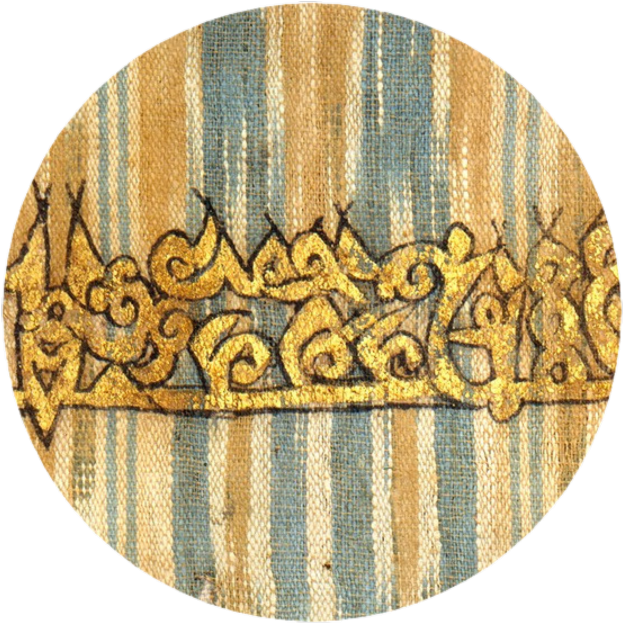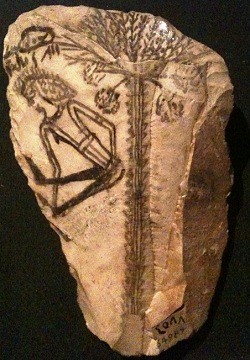Since you are so taken with Penelope's loom - having found a good picture where it appears to lack none of its component parts, its warp tightly and handsomely stretched, its weft containing the bulging fibers - and you hear not only the whir of Penelope's shuttle, but her crying out the tears that Homer melts ice with as she unravels her web: consider the spider [in a picture] nearby, and whether it doesn't outweave Penelope and even the Seres ["Silklanders"], who work in strands so fine as to be nearly invisible.
These gates open onto an ill-kept household. You would say its owners have deserted it. The courtyard within is obviously abandoned. No longer held up by its pillars, the structure sags and is falling in. It is a home to spiders only, for the animal likes a tranquil setting to do its weaving. Look at the strands, and how the spider secretes its spinning and anchors it to the floor. The artist shows them climbing down the web and clambering back up, the "high-flying" spiders as Hesiod calls them, and flying is what the spiders do. They weave their homes in corners, some wide outspread, some concave hollows: the outspread webs are excellent summer quarters, whereas the hollow nests they weave are good in winter.
Nor do the artist's accomplishments end there. The exacting adumbration of the spider, the naturalness of its stippling, the rendition of its wild and shaggy fur - these are the productions of the awesome, truthful power of a good craftsman, who wove for us these slender cords. Look at the rectangular one girding the web's four corners. Like the cable of a loom, it supports a delicate net that whorls round in many orbits, its interstices tautly strung from the outermost circle to the smallest, knitted crosswise at intervals that match the distance between each circle. And all about the web, the weavers ply their trade, tightening up the threads that have fallen slack. As payment for their weaving, there is a feast of flies whenever one gets entangled in the webworks. Accordingly, the artist has not left out the spiders' prey. One is caught by the foot, and another by the tip of one wing, while a third is being eaten up headfirst. And struggle as they may to escape the web, they cannot shake it loose or cause it to come undone.
Philostratus the Elder, Images II.28





